#apo whang-od
Text
Painting a picture of the history of Filipino Tattoos
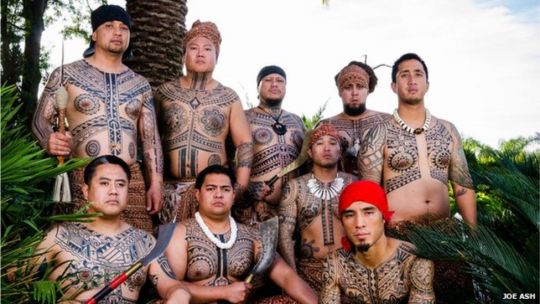
A photo of tattooed Filipino men posted on BBC and accredited to Joe Ash
Tattoos are often seen as integral cultural symbols in my different societies whether it be seen as something honorable or dishonorable. Even in the most straight-laced cultures, a tattoo acts as a mark of some form of the person's history and their standing in their communities as well as how people perceive them.
In a lot of modern cultures, the tattoo often have negative connotations, often associated with delinquency or criminal activity. Historically, however, they may have grander and more honorable significance in different societies. The communities that had existed in the Philippines prior to contact with Spain fits this similar pattern.
Before I start
As usual, the Philippines is a diverse country that has different traditions and histories that come from different ethnic groups and states, only being first unified under a government by colonization. Because of this, this post will only be able to cover parts of this culture and may not be able to fully encompass all Filipino traditions, practices, and beliefs about tattoos.
This is also given the fact that more specific information may be harder to come across or may not exist at all in a space I could easily access.
That being said, the general term for Filipino traditional (both precolonial and current) tattoo practices is batok, batik, patik, or patek depending on language or culture. It is also known as buri or burik in several other groups and languages. This word, however, isn't often used for typical tattooing in most modern communities.
The History
From a general understanding of a lot of precolonial Southeast Asian cultures, it can be assumed that precolonial Filipino societies heavily valued tattoos as their neighboring maritime SEAsian countries also had prior to the introduction of Abrahamic religions to the region which often discouraged or even forbade tattooing the skin.
Although this can be assumed, there were no known precolonial description nor record of these tattoos during the actual time period before Spanish contact. There is evidence found in some burial sites however, as discussed by social anthropologist Salvador-Amores in her paper The Recontextualization of Burik (Traditional Tattoos) of Kabayan Mummies in Benguet to Contemporary Practice (2012). In the paper, she focuses a section on the history of burik by explaining the Kabayan Mummies or the Fire Mummies of Benguet, Mountain Province.
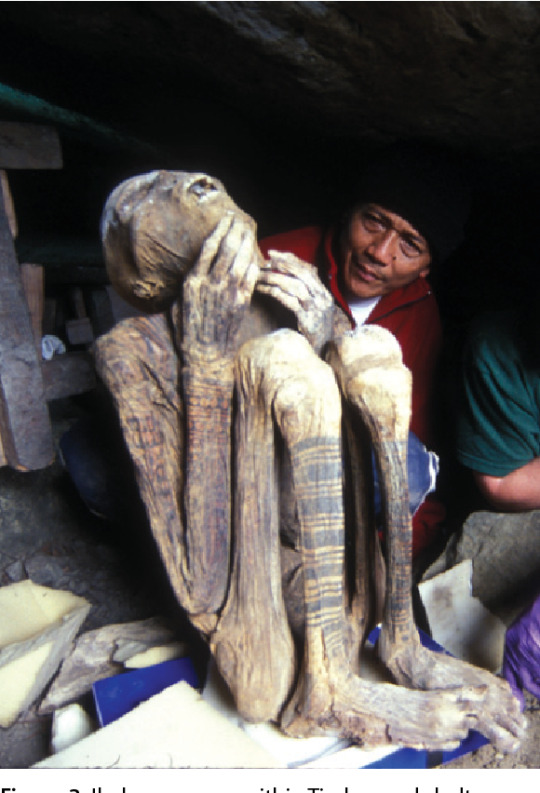
An image of one of the Kabayan Mummies uploaded by Dario Piombino-Miscali on ResearchGate.net
These remains had been dated back to the 13th century and are associated with the Ibaloi, an indigenous ethnic group from Mountain Province found in the northern parts of the island of Luzon. This does confirm that tattooing had been important to the people who had lived in this area during this time period as, in Salvador-Amores's paper, it can be noted that the tattooed mummies seem to be prominent with the adults.
I do have to note that the Ibaloi people, who are part of the larger Igorot ethnic group, were not fully colonized by the Spaniards and therefore does not share the similar Hispanic culture and history that a lot of Filipino groups have. They had only fully been integrated into the Philippines during the American colonial period where they and the other Igorots had been properly colonized by American and placed under the rule of the American-controlled Filipino government. (x)
Regardless, this does show that at least some cultures in the archipelago held tattoos with high importance and did not consider them as something negative compared to the modern perception of tattoos.
The first known illustration of tattooed Filipinos, however, was first seen in the Boxer Codex (circa 1590) during the early Spanish colonial period, written and illustrated by an unknown author.
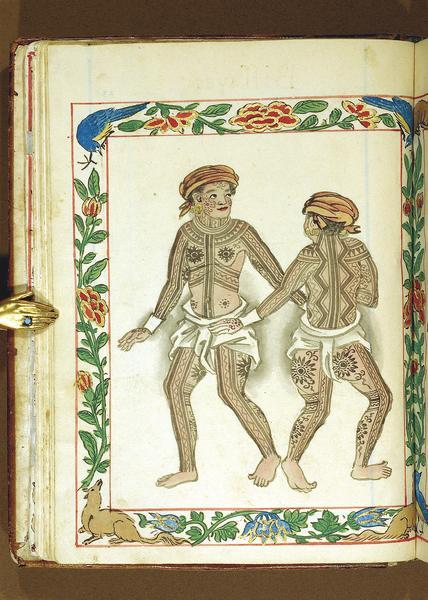
A page from the Boxer Codex (circa 1590), author uknown
This illustration seems to be that of the specific ethnolinguistic group, the Visayans as this page is next to another one labeled as "Biſſaya", a likely earlier spelling of Bisaya that uses the long s (ſ). This aligns with the description given as early as Antonio Pigaffatta, Ferdinand Magellan's chronicler, who consistently describes the Visayans that he has met as painted in his account of their arrival in the islands back in 1521.
The book The Philippine Islands 1493-1898 Vol. XII has compiled different first-hand and second-hand sources about the Philippines during the 15th through 19th century, with Vol. XII focusing on the early 17th century which aligns closely to the Boxer Codex. Within the text, there are several mentions of the "Pintados" or the Painted ones, even having an entire province be called the "province of Pintados".
It isn't made clear who the Pintados are besides the fact that they seem to be hostile towards the Spanish colonizers and had often fought battles with one of the letters even claiming that they had poisoned one of the Spaniards. It isn't until we reach the last part of the compilation which features Pedro Chirino's Relacion de las Yslas Filipinas which I had a hard time finding before but had now found a free and accessible copy. Within Chirino's writing, he explains that the Pintados seem to be a name given by the Spaniards to the Bisayans and further explains it as such:
"The people of the Bisayas are called the Pintados, because they are actually adorned with pictures --not because this is natural to them, although they are well built, of pleasing countenance, and white; but because they adorn their bodies with figures from head to foot, when they are young and have sufficient strength and energy to suffer the torment of the tattooing; and formerly they tattooed themselves when they had performed some act of valor."
Chirino even gives an explanation as to how precolonial Visayans tattooed their skin:
They tattoo themselves by pricking the skin until the blood comes, with sharp, delicate points, according to designs and lines which are first drawn by those who practice this art; and upon this freshly-bleeding surface they apply a black powder, which is never effaced. They do not tattoo the body all at the same time, but by degrees, so that the process often lasts a long time; in ancient times, for each part which was to be tattooed the person must perform some new act of bravery or valiant deed
It is notable, however, that not only did the Spanish not mention any tattoos on other Filipino groups such as the Tagalogs, but a lot of the illustrations in the Boxer Codex do not sport any tattoos at all which makes it confusing as to when had tattoos faded out of cultural significance in these other communities, likely even before Spanish contact.
Lane Wilcken, a researcher who studies the history of tattoos from the Philippines and the Pacific Islands, writes in his book Filipino Tattoos: Ancient to Modern (2010) that it may be possible that the Tagalogs may had lost their tattooing traditions shortly before Spanish contact during the recent islamization of their communities circa 1500 which was and specifically in the polity of Maynila. This may also be the case for the Moros which is a muslim ethnolinguistic group found in the island of Mindanao.
Either way. tattoos became more scarce within Filipino records after the arrival of the Spanish and the introduction of Christianity to the islands, save for some indigenous groups that were not fully colonized by Span like previously mentioned Igorot people.
Because of the spread and dominance of Christian and Islamic customs throughout the country, Batok, as it originally was, was lost to time with the lack of existing artists and cultural relevance tattoos. Tattoos didn't come back to the Filipino mainstream until modern tattoos became more prevalent especially in the mid to late 20th century, similar to its rise in popularity in Western cultures, and even then, it wasn't really what I would consider any traditional and is often negative.
Present Day
Like a lot of other countries, however, tattoos had seen a swing of opinion and is more accepted now as an art form rather than a sign of criminal activity but some stereotypes are still popular.
For instance, during the COVID-19 lockdown, the Department of Education provided modules for students to answer at home which would be then collected by the school from door to door. In one of these modules, Lea Salonga, a Filipino singer, complained on November 17, 2020 on her Facebook page of a discriminatory question that was found in one of the modules, pictured below
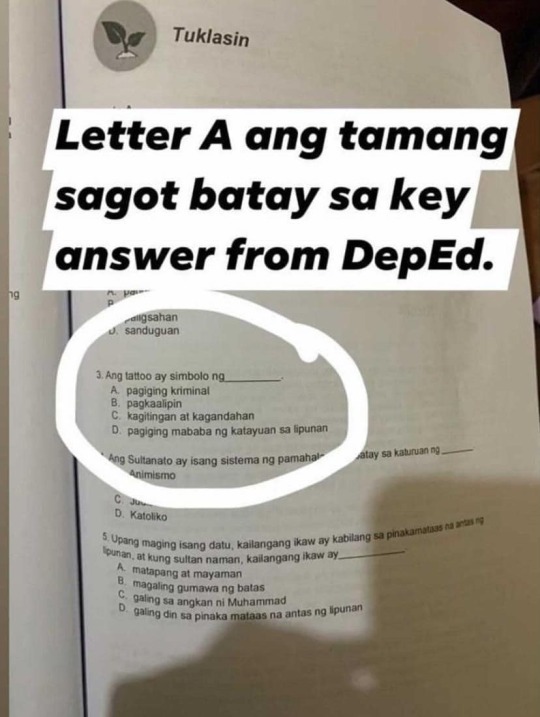
EN Translation:
White text: The answer is letter A based on the DepEd answer key.
Module text:
3. Tattoos are a symbol of _____
A. being a criminal
B. being a slave
C. courage and beauty
D. having a low standing in society
This controversy caused an uproar online and showed that there are a lot of Filipinos today that don't see a problem with tattoos and even see them as a positive. Two days after the image was posted on Salonga's page, the Department of Education publicly recognized the misstep and had issued that they officially recognized the controversial answer as an error.
It is important for me to note that, just like in a lot of countries, tattoos are typically not accepted in the corporate world and those who have them either have to get them removed or at least cover them up if they get hired at all. There's still a common idea that people with tattoos, if not dangerous, may be seen as unprofessional or even unclean which I do know is a similar thing that other countries may have as well.
As for batok, its comeback in the larger Filipino mainstream didn't return until some time in the late 2000s and 2010s when more international influence had resparked and interest in more ethnic cultures including the precolonial Filipino tattoos specifically because of the internet and the rise of social media. The current batok that we see outside of indigenous communities could be seen as a recreation of the extinct practices within the Philippines with some level of appropriation from related cultures (by appropriation, I mean this in a neutral way not a negative one).
It is argued whether or not the reconstructed practice could be considered traditional at all, but considering its heavy emphasis on the older designs found in historical illustrations as well as designs from indigenous communities that did not have practice eradicated by colonization, some also argue that the modern tattoos that has gained prominence because of modern technology and research is still valuable in a socio-anthropological sense.
As Salvado-Amore puts it
the successive phases and changes in the status of burik tattoos—enabled by the advent of modern technology, the Internet, and mass media—encourage an interaction between contemporary and historical influences rather than an extinction of past practice.
About Apo Whang-Od
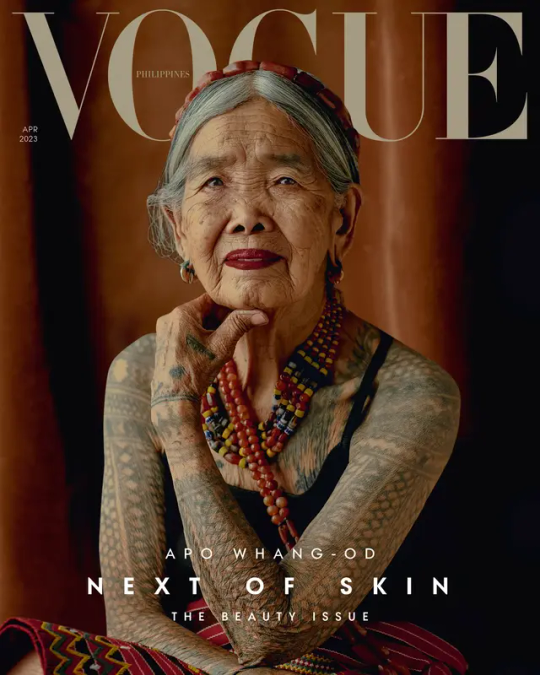
A magazine cover of Vogue featuring Whang-Od, a traditional tattoo artist from the Butbut people, a subgroup within the Kalinga ethnic group. (The rest of this section pulls from the same article by Vogue)
Any research about Filipino tattoos, especially in the modern day would be incomplete without any mention of Whang-Od, the most popular traditional tattoo artist from the Philippines.
Apo Whang-Od (b. February 17, 1917, a.k.a. Maria Oggay) is a member of the Butbut people of the Kalinga indigenous ethnic group from Kalinga province, Philippines. She is often known as one of the last mambabatok in the country which earned her fame and recognition internationally. She started her tattooing practice since she was a teenager at age 16, under the mentorship of her father and was the only known female mambabatok during her time.
For years, she was called on by different communities within her locale in order to tattoo important and symbolic tattoos on members of her and different communities after they had received certain milestones. Men were tattooed for different reasons than women as men were given their marks when they succeed in activities like headhunting, which was ritualistically important for the Butbut people while women were tattooed for reasons like fertility or beauty.
Because of American colonization, however, headhunting was prohibited so she was mostly tattooing women from then onward.
She started gaining recognition some time in the mid-2000s to the 2010s after she started serving foreign tourists, although she doesn't give them the more traditional symbols. Non-members of the group are given a set of tattoos that she could tattoo on anyone without any strong connection to the original meaning of the art.
Since tattooing was passed through family and Whang-Od herself didn't had any children, she was known as the last mambabatok for a time which caused concern for the extinction of the practice as she was already in her 90s when she gained notoriety, but she has since started training her grandniece Grace Palicas and later on her other grandniece Elyang Wigan and the two, who are now in their 20s, has since helped their great aunt dealing with their clientele.
Due to her fame, she is often the subject of foreign media and interest, even being invited by Vogue magazine to pose for one of their covers (pictured above) and is now known as the oldest Vogue cover model earlier this year at the age of 106.
Despite her fame and arguably cultural importance to not only the Kalinga people but the Philippines as well as online petitions since the 2010s to give her the recognition, she is not eligible to receive the National Artist award— one of the highest awards given to artists of most artistic fields of which only 81 people had received. Victorino Manalo, Chairman of the National Commission for Culture and Arts (NCCA) explains that this is because her craft, tattooing, isn't covered by the NCCA but by the Gawad sa Manlilikha ng Bayan (GAMBA, en. Award for Crafters/Creatives of the Nation) but there has been some discussion within the commission about this issue which still ended with her being denied. In light of this, she is now currently on the running to possibly receive the GAMBA award.
She has an online presence managed by others and she can be found via Facebook and Instagram.
Tattoos now, from my experience
As I had said before, tattoos these days are not as negatively seen as they were in the 20th century and had received a more positive reputation thanks to the rise of its social experience due to the internet and social media's prevalence in the country. As an art student, in fact, it's wasn't that surprising when I learned that one of my classmates had a tattoo and it was even a full sleeve! Now, as least three had tattoos before they graduated with one of them actually being a close friend of mine who's planning to get more despite their parents' disapproval.
Despite this, I still do have people in my life right now that see tattoos as undesirable and unclean, with stereotypes still being prevalent. I had once heard people speak of them in such a negative way but then make an exception for the artsy type of people? It's odd.
As for batok or batik, I had not seen a lot of people with these tattoos in my own life and had only seen it through articles and images circulated around by other people who I don't even know. I guess it makes sense as most people who do get tattoos similar to batok or batik often do it in tourist-y places or are foreigners who want to get a piece of Filipino culture on their way out of the country.
Besides more culture-focused people, batik or batok isn't as prevalent as some of these articles might make it seem and most typical Filipinos who don't come from these cultures are more likely to either not have tattoos at all or have similar tattoos to those that you may see in other countries.
Either way, tattoos could be so personal to a person and whether it's something as deeply-rooted to culture like batik or if it's just the names of your favorite K-Pop idol, that tattoo is important and has special meaning. Get whatever tattoo that you want or don't if you don't want any at all!
#mayaposts#mayapino#philippines#filipino#philippine history#philippine culture#filipino culture#filipino tattoos#philippine tattoos#history#culture#tattoos#apo whang-od#whang-od#mummy#mummies#death#long post#very long post
75 notes
·
View notes
Text

Apo Whang-Od (Vogue Title Story)
Ph. Suchet Suwanmongkol
192 notes
·
View notes
Photo
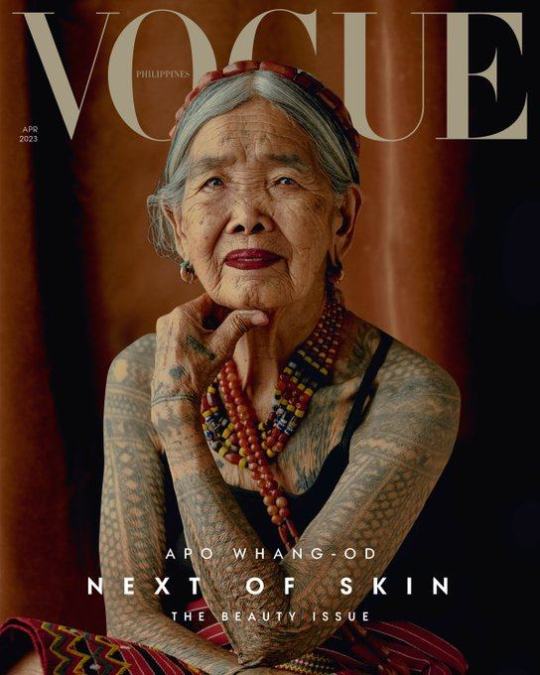
A 106-year-old Apo Whang-Od, a tattoo artist from the Philippines is Vogue's oldest ever cover model~ :: [As She Is] :: @Via Frankie Timmers Via @Feminist News
* * * *
“To keep our hearts open is probably the most urgent responsibility you have as you get older”
~Leonard Cohen
118 notes
·
View notes
Text


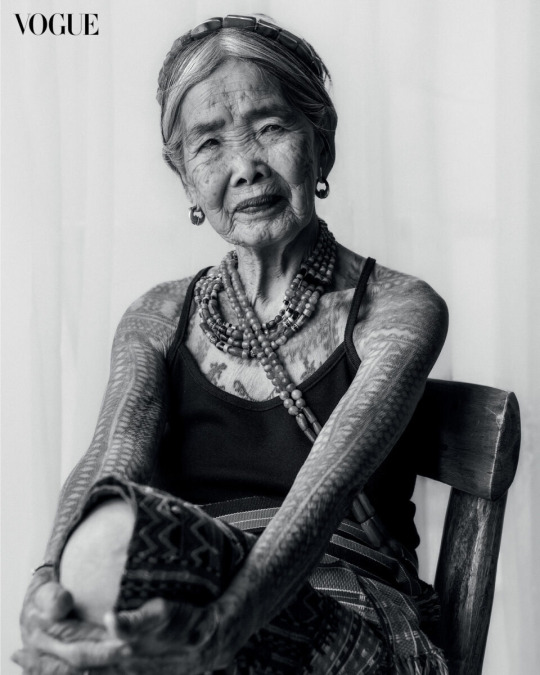


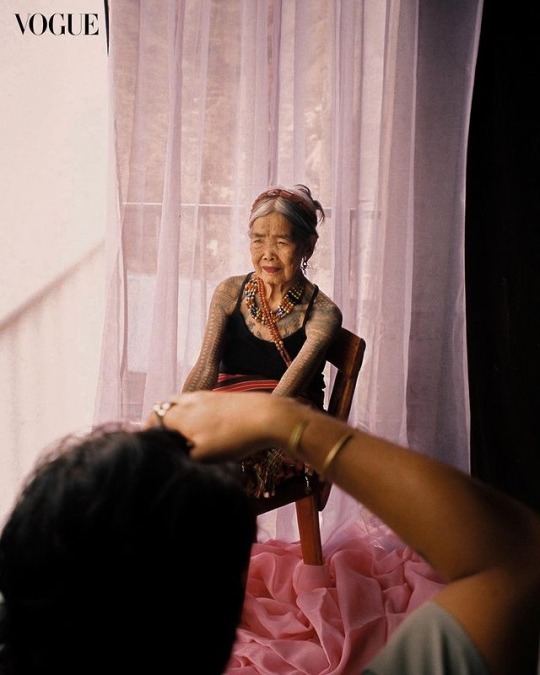
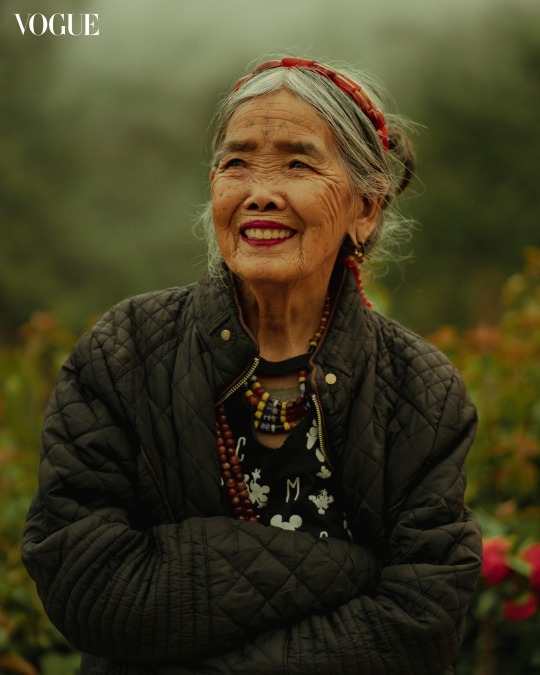
APO MARIA “WHANG-OD” OGGAY for Vogue Philippines photographed by Artu Nepomuceno (2023)
87 notes
·
View notes
Text

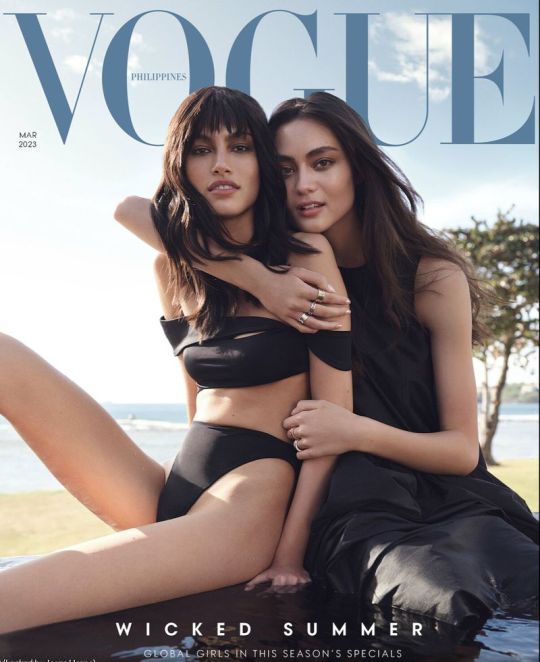




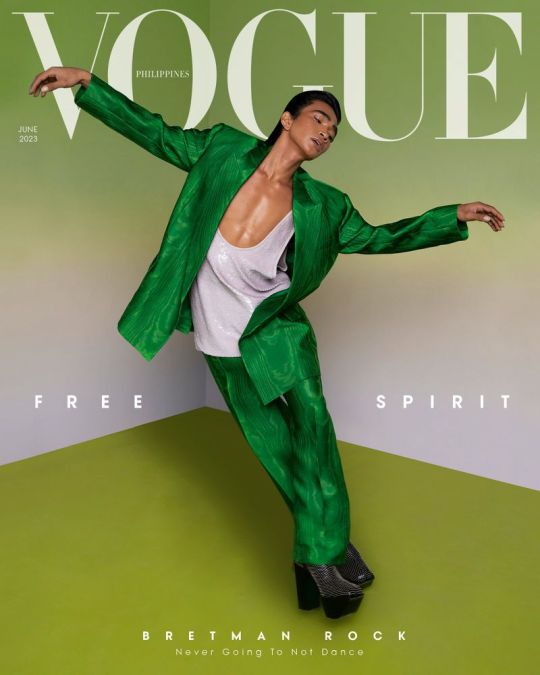







[2023 year in review ~ Vogue Philippines]
FEB - H.E.R.
MAR - Daniela Szpejna, Jasmyn Palombo
APR - APO WHANG-OD
MAY - Juliana Gomez, Sai Versailles, Brisa Amir, Daphne Lbc, Gianna Encarnacion, Siobhan Moylan
JUN - Bretman Rock
JUL - Aliah Canillas
AUG - Dr. Dolores Ramirez
SEP - Jo Ann Bitagcol, Lukresia, Rina Fukushi
OCT - Michelle Dee, R'Bonney Gabriel, Catriona Gray, Melanie Marquez, Megan Young
NOV - Heart Evangelista
DEC - Gemma Cruz-Araneta
#vogue philippines#h.e.r.#daniela szpejna#jasmyn palombo#apo whang-od#juliana gomez#sai versailles#brisa amir#daphne lbc#gianna encarnacion#siobhan moylan#bretman rock#aliah canillas#dr. dolores ramirez#jo ann bitagcol#lukresia#rina fukushi#michelle dee#r'bonney gabriel#catriona gray#melanie marquez#megan young#heart evangelista#gemma cruz-araneta
11 notes
·
View notes
Text
I've had the pleasure to meet and get the signature 3 dots tattoo from the world famous Apo Whang-Od! She was a busy lady tattooing all day at the age of 106 years old. We had some pretty good banter in the short time we spent together. She also took a liking to my husband, maybe a lil too much lmaooooo
The three dots tattoo represents herself and her two grand-nieces/apprentices: Grace Palicas and Ilyang Wigan. A simple but clear showcase of the continous tradition of tattooing in Buscalan.
The other design I've gotten was the kappi crab, which symbolises/represents: the traveller, protection, the world before creation and the guide. The kappi crab was an obsolete design that was revived by Apo Whang-Od herself. It was previously found all throughout the archipelago and was tied to various creation stories. The kappi crab is also associated with Angalo, the ancestor of the Ilokano people. And as part Ilokano I am truly grateful to receive this ancestral symbol to cherish it forever.
I had a wonderful time in Buscalan, the locals were absolutely lovely and were very patient when we were huffing and puffing through the trail up and down their mountains. The views were absolutely stunning and certainly helped distract from the pain of the fresh tattoo! 🤣✨
I will definitely provide a healing update in the near future. It's been a few days and the redness has already gone down a lot. 🙏✨


#traditional tattoo#Apo Whang-Od#Buscalan Tattoo Village#Ilokano people#ilokano#filipino witchblr#witchblr#ancestral veneration#filipino tattoo traditions#filipino folk tradition#Whang-Od#kappi crab#angalo the giant
12 notes
·
View notes
Text
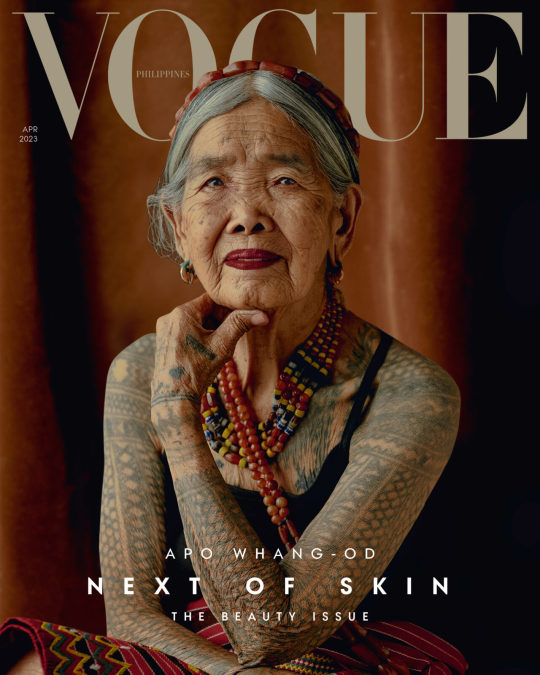


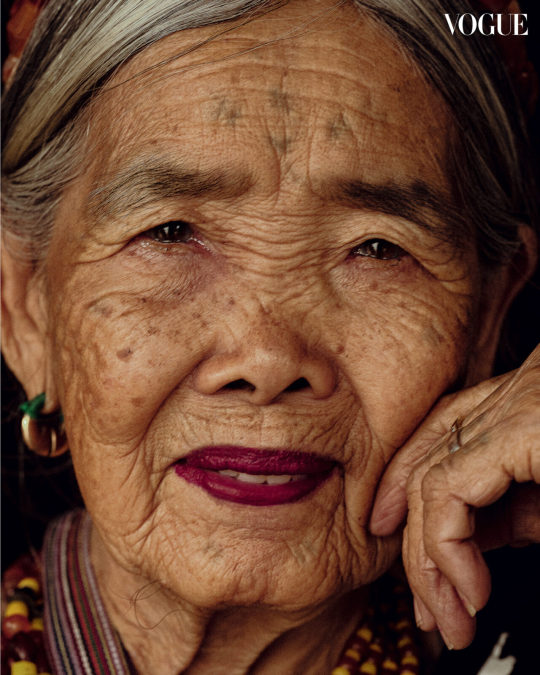
Apo Whang-Od | Vogue Philippines | Arto Nepomuceno | April 2023
2 notes
·
View notes
Text

Apo Whang-od Oggay aka Maria Oggay, the "last" and oldest (105 in 2022) mambabatok (traditional Kalinga tattooist) and is part of the Butbut people of the larger Kalinga ethnic group. _wikipedia
#art#drawing#woman#woman portrait#portrait#apo whang-od#whang-od#centenarian#awesome people#tattoo artist#tattooist#mambabatok#tinted charcoal#carbon pencil#white charcoal#mars lumograph black
2 notes
·
View notes
Text

Apo Whang-Od for Vogue Philippines by Artu Nepomuceno
1 note
·
View note
Text
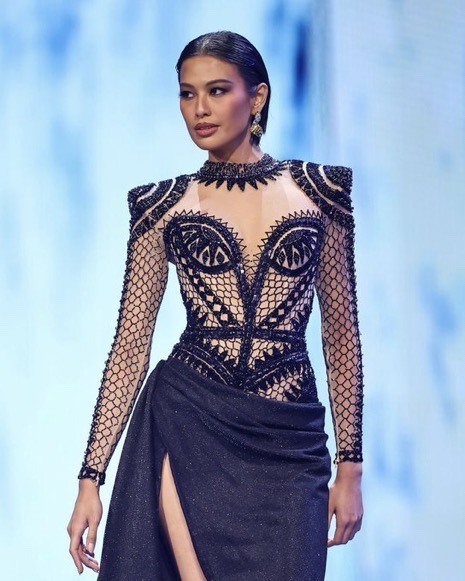
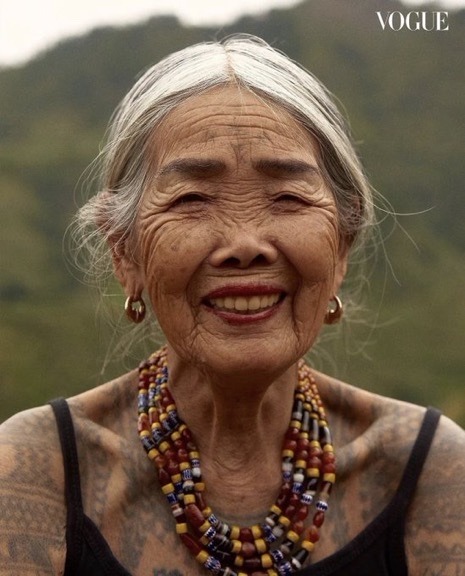

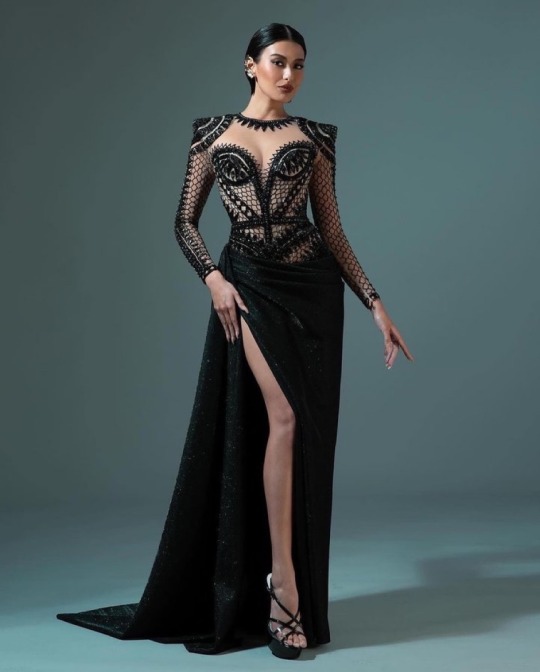

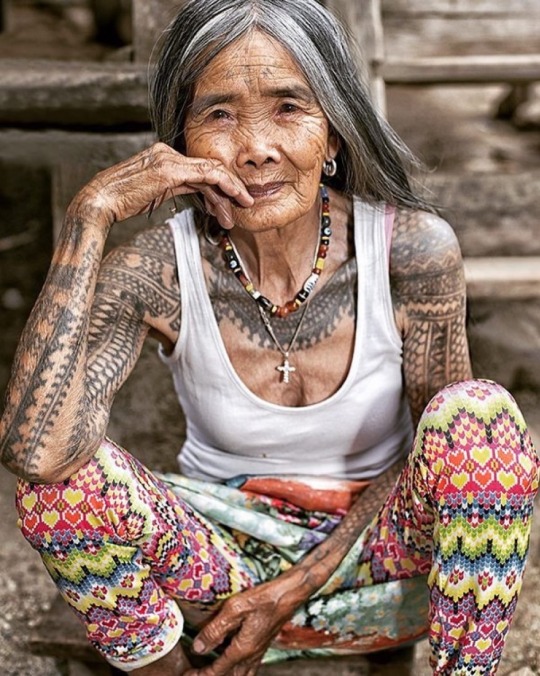
Michelle Dee, Miss Phillipines 2023, wore a dress as a tribute to the last and oldest living Kalinga (Indigenous Filipinos) tattoo artist, Apo Whang Od and her work
#michelle dee#Michelle Marquez dee#Maria Whang Od Oggay#apo whang od#philippines#miss universe#miss universe 2023#filipino#fashion#couture#fashion history#tattoo#indigenous#indigineous people#history#Art history#Vogue#miss Philippines#miss Philippines 2023#mine
8K notes
·
View notes
Text

Desde o início do mês quero deixar registrado o quanto é bonita e importante essa capa da Vogue Filipinas. A revista quis ilustrar na capa do mês de abril uma mulher que representasse a cultura do país, para muito além de uma beleza padronizada, direcionando o foco para a beleza humanizada.
Calhou dessa estrela ser Apo Whang-Od, tatuadora de 106 anos de idade, o que também a transforma na pessoa mais velha a ser capa da Vogue, uma ótima conquista representativa contra o etarismo.
Apo vive numa província chamada Kalinga, também nome de sua tribo, e é considerada uma das tatuadoras mais antigas do país. Sua arte é procurada por pessoas do mundo inteiro, que peregrinam até o vilarejo para conhecê-la. Apo cria desenhos geométricos usando vara de bambu, água, carvão e o espinho de um pomelo. Treinou suas sobrinhas-netas para que deem continuidade ao estilo único de Kalinga, pois essa arte só pode ser aprendida por parentes de sangue, mantendo a tradição a cada geração.
1 note
·
View note
Text

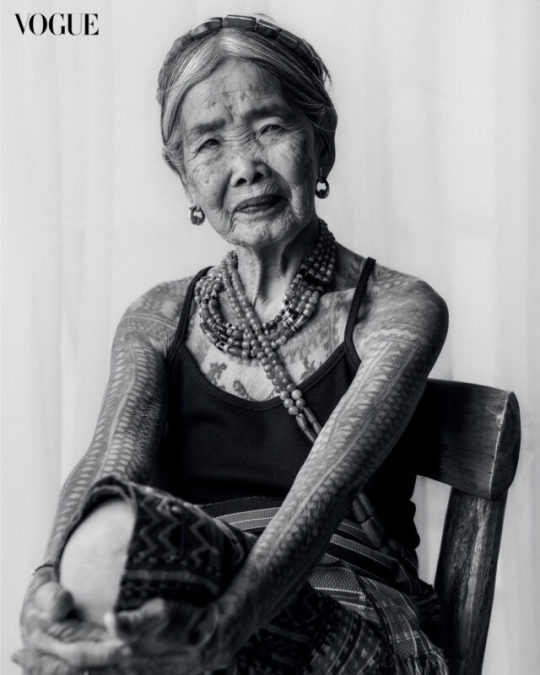
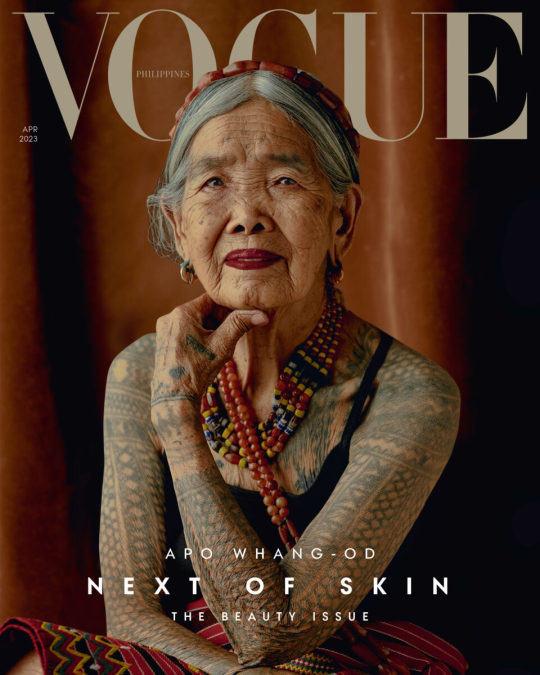
Apo Whang-Od on the april cover of Vogue magazine.
0 notes
Text

105 year old Whang-Od Oggay, traditional Kalinga tattooist.
146 notes
·
View notes
Text


Miss Earth Philippines, wearing a hand painted tribute to Apo Whang Od
68 notes
·
View notes
Text
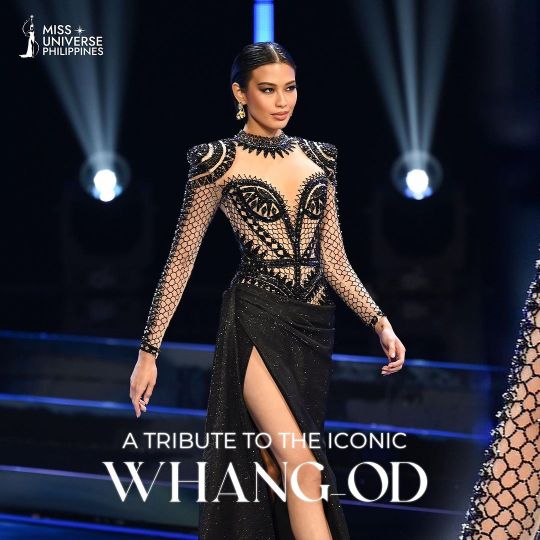
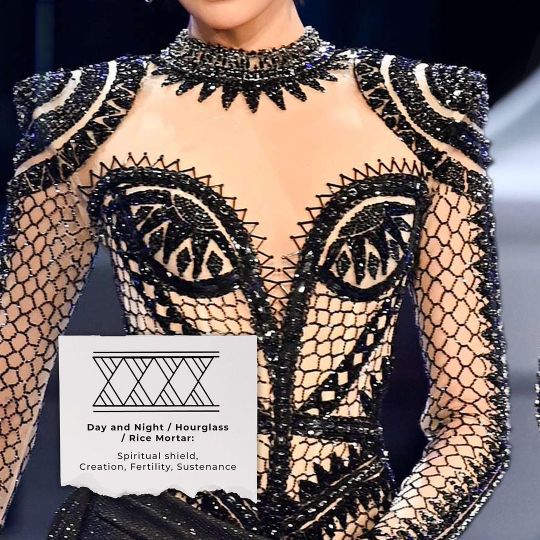


Miss Universe Philippines 2023, Michelle Marquez Dee, wearing a gown designed with Mark Bumgarner.
The design was inspired by the traditional tattoos of Maria Whang Od Oggay, popularly known as Apo Whang Od (pictured below).
At age 106, she is the oldest tattoo artist, or 'mambabatok', from Kalinga in the Philippines.

#miss universe philippines#apo whang od#tattoos#mark bumgarner#traditional tattoo#pattern#surface pattern#symbols#philippines#kalinga#mambabatok#2023#hourglass#snakeskin#fern#rice mortar#time#day and night#fertility#strength#health#protection#fashion#textiles#beading#bead embroidery#image description in alt#batok#tattoo#art history
49 notes
·
View notes
